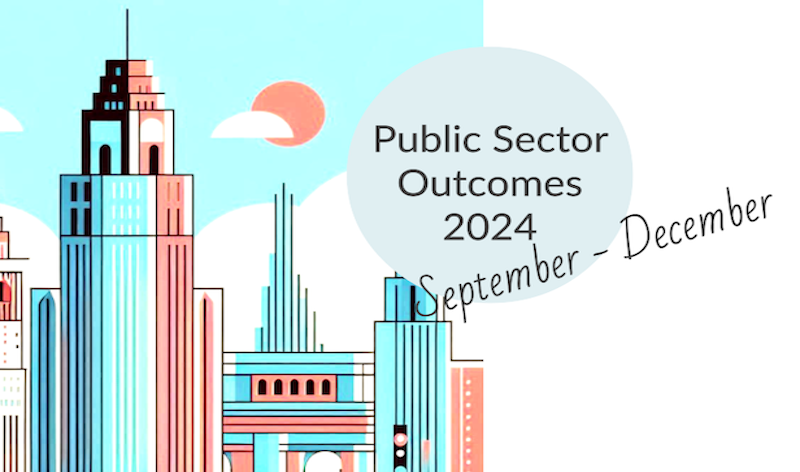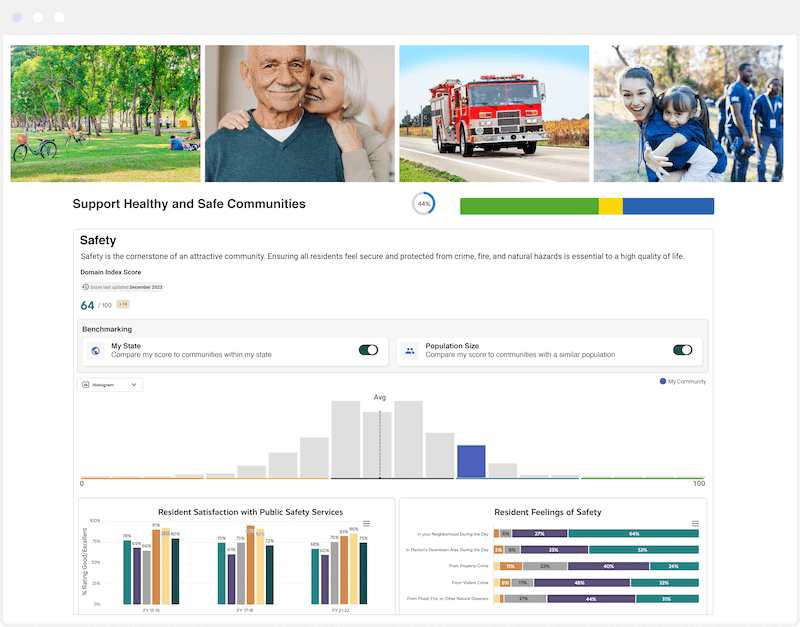Contents
The Borough of State College is a vibrant college town in the heart of Pennsylvania. The Borough is known as “Happy Valley” thanks to an enviable mix of arts-infused urban and beautiful rural environments (fun fact: Jimmy Carter used to regularly visit to fish in local Spruce Creek). It is also home to Penn State University, which contributes to a fluctuating community size of between 43,000-100,000, depending on whether or not students are on campus.
Much of the economy and culture of the community is influenced by the University. So when the pandemic hit and student activities reduced, then stopped entirely, the community was hit hard.
As Douglas Shontz, Assistant to the Manager at Borough of State College described it: “It’s been pretty desolate over the past year. Most things have been shut down and—while businesses have done a great job adapting—we just haven’t had the same population to support them. It’s been really tough.”
Like most local government leaders, Douglas also found that the pandemic had immediately changed the priorities of the organization. Long term strategy was put on hold while Douglas and his team became almost entirely reactive to the evolving crisis, and to keeping the public informed.
“My entire life consisted of the pandemic. I was writing releases, constantly adapting everything, and handling the hundreds of calls from residents, businesses and council members. It was all hands on deck.”
The whole world had turned upside down, but Douglas felt that they were doing a pretty good job of communicating with their community through the chaos.
Then they ran a free survey assessing their COVID-19 community communications and… well, Douglas describes it best:
“We were wrong.
When we looked at the survey results, we realized that we were missing a huge percentage of the community by relying on our usual methods of communications during this crisis. Given the urgent nature of a pandemic, we knew that our mindset couldn’t be “Well we’re hitting 75% of the population and that’s good enough.” We needed to hit 100%. We quickly got an internal team together and explored new ways to improve our communications.”
Within a week, Douglas and his team had a new communications strategy rolled out. It combined both traditional communication channels and completely new channels to better serve the community’s mix of older residents and a large student population.
The new strategy helped them to reach a much wider audience, cut through the noise to answer residents’ concerns, and significantly reduce the amount of time that the team were spending on answering the same questions over and over.
Here’s what they did:
1. Surveyed the community
Douglas is keen to stress how pivotal their free community survey was in helping them to understand and improve communications during the crisis:
“I didn’t know what we were doing wasn’t working until we got those survey results. The survey also helped to inform why certain channels weren’t working. A large percentage of our community doesn’t get the paper delivered and doesn’t watch the local news. So some of those traditional channels simply weren’t reaching them.”
They ran their survey for just a few days and got an enormous response, highlighting key community concerns and identifying where there were gaps in the information being shared.
2. Worked cross-departmentally
With survey data in hand, leaders at State College created a cross-departmental team that included more than just the communications folks. They included community engagement, the mayor, ordinance enforcement, health officers, facilities managers, the parking director, and public services, amongst others.
Douglas provided an example: “We wanted to get signage up all over the place with public health information. So as part of our cross-departmental team, our facilities manager, parking director and public services manager came up with the idea of putting big bumper stickers on the refuge trucks. Now, whenever we take out a truck, we have a mobile billboard saying “mask up.” This is not something that the communications team could have done on its own.”
3. Consolidated where residents get information
The survey results had highlighted that many residents were struggling to cut through all the noise surrounding the pandemic and get answers to simple questions.
The State College team started directing the community to just two main points for information—a local helpline (run by a County-wide nonprofit called Centre Helps) and the Borough of State College website, which included a public dashboard on service availability (more on that below).
Initially, the team had thought they would need to launch their own call center but by better coordinating with existing community efforts for Centre Helps, they were able to make a single, consolidated helpline available.
4. Launched a public dashboard
The State College team also wanted a central place online where they could direct the community for information.
Using Envisio, State College launched a color-coded public dashboard to update people on which municipal services were being impacted by the pandemic. The dashboard helps to answer questions such as what police services are still available, how tax deadlines are changing, or how to get a plan reviewed by a zoning officer while the planning office is closed.
Douglas explained: “The dashboard is one of the things I’m most proud of. It’s a one-stop-shop for residents to get answers. For example, using the dashboard, yellow means okay you can get your land development reviewed, but you have to call a certain number. And then we wrote instructions directly in the dashboard item line on how to do that. It has provided a super easy place for residents to get information. It’s also digital, which we love, because it helps us in hitting our sustainability goals”

The dashboard has been a great way to get information out to students in particular. It’s also an invaluable resource for internal teams and helpline staff to access the most up-to-date information on council services when answering residents’ questions.
“It completely stopped the chain of emails saying things like, “What’s the parking status?” or, “Is there still free parking downtown?” or, “Do you have to pay to park in the garage?” So from an internal standpoint, dealing with the external, it was really successful.”
5. Advertised information points through traditional and new channels
So with two streamlined routes for residents to get information, how did they let the community know where to go?
“By using everything,” says Douglas.
They advertised through social media, through community influencers such as council members, and even a mailed postcard with the helpline number and website listed. They also leaned heavily on local media.
“I go out of my way to make friends and be a resource for local media partners. So when we needed to get this out there, we were able to do it without spending anything. For example, we worked with the Morning Getaway crew on our local radio station to do an internet series about our public dashboard. We’ve never done that before.”
The lightbulb moment for the Borough of State College team was the realization that they had to do more than rely on a few, go-to methods for reaching people.
“Look, we knew we weren’t reaching enough people,” explained Douglas. We definitely weren’t going to turn our backs on traditional communication methods, such as flyers and signage, but we needed to do more. We couldn’t just take the approach of “wait, we’re putting a statement out on it,” when our community was desperate for information.
In the end, it’s probably easier to list what we didn’t do in order to let people know about the best ways to stay informed. We basically used everything at our disposal. Except for TikTok… I’m just not a good enough dancer.”
Community Communications in 2021
While the pandemic is far from over, Douglas and his team are now starting to think ahead to how they will continue to use some of the community communication tools and tactics that have been so successful over this last year, including:
- A new Envisio community dashboard to track and share their progress against 6 critical success factors baked into the Borough’s strategic plan.
- A community dashboard to increase transparency as they implement recommendations from an independent assessment of the police department.
- Potentially even a dashboard to help with local vaccine distribution, although the situation is still in flux.
Douglas admits that he’s learned a lot over the last year. And as we face another year of uncertainty, his parting thought for other government communications experts is “be willing to try something new and be open to new ideas. Don’t just lean on traditional means. That was our biggest help throughout this whole thing.”
—
For a deeper dive on the Borough of State College’s pandemic response, you’re invited to join Douglas and ELGL for a webinar on February 23rd: Pandemic Communications & Information Dashboards.
If you’d like to learn more about creating your own community dashboard with Envisio, get in touch!
From all of us at Envisio, we hope you are keeping safe and well.




